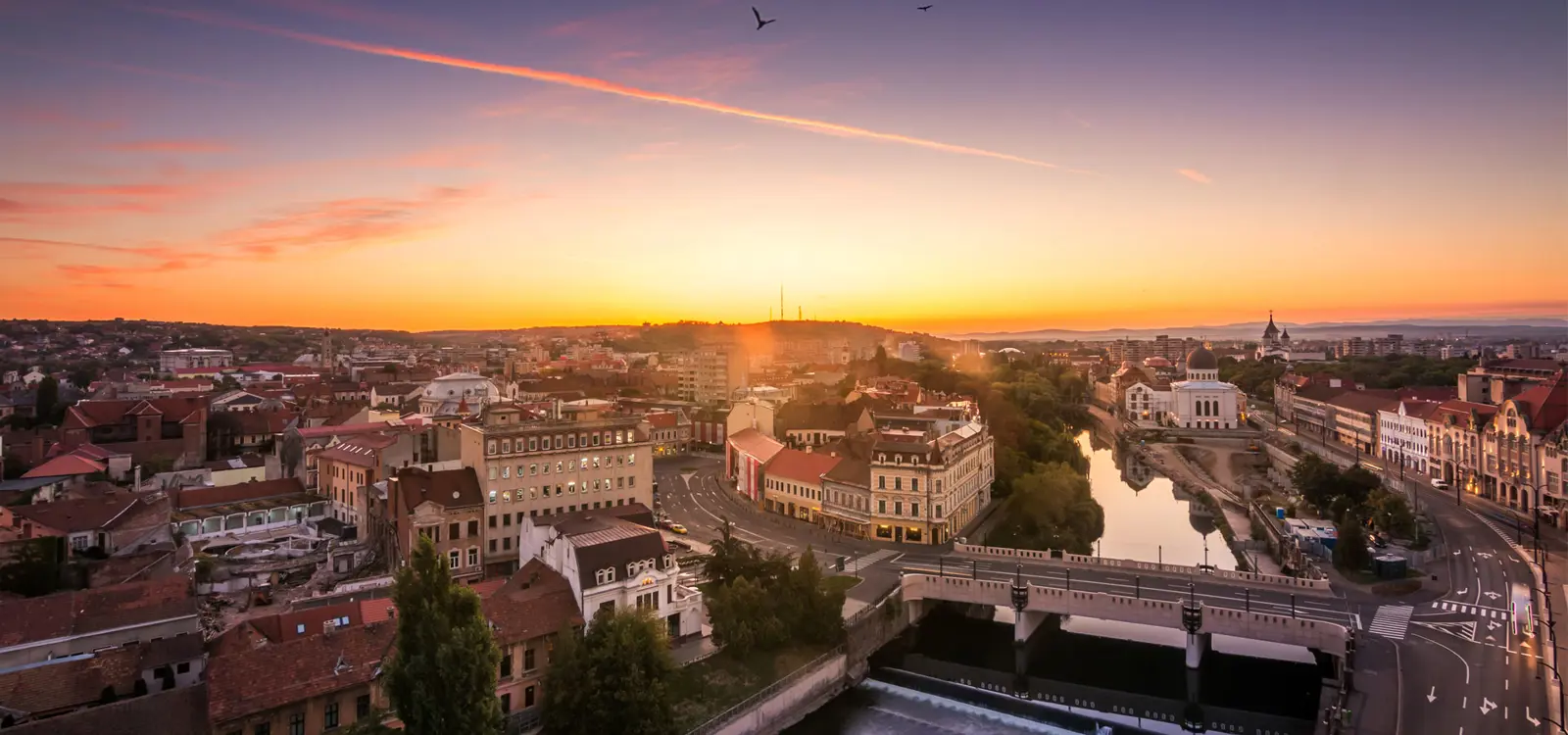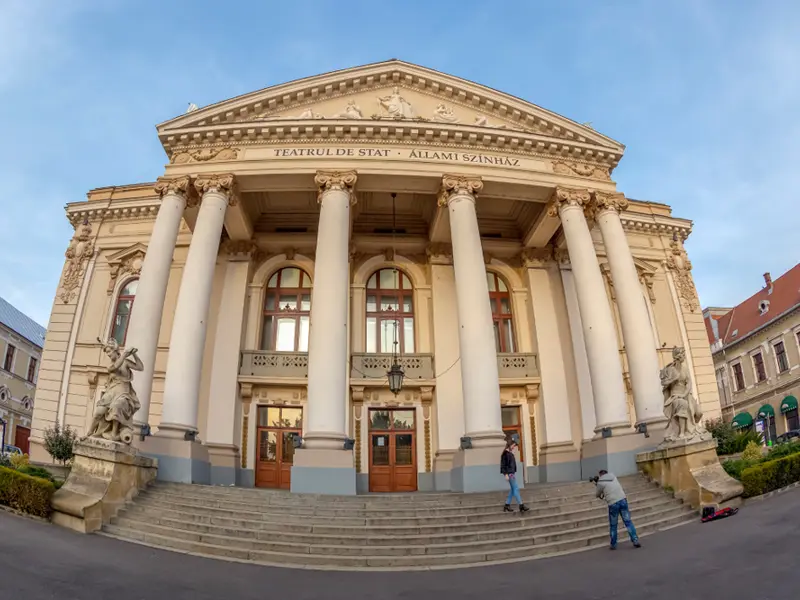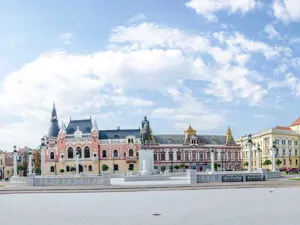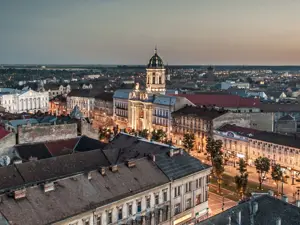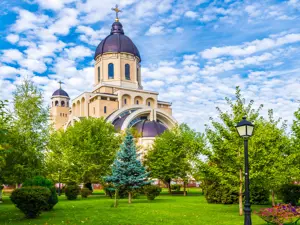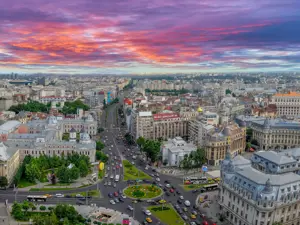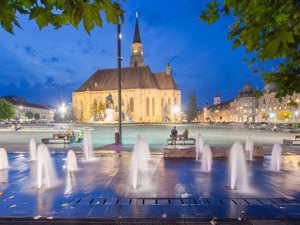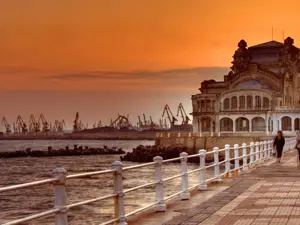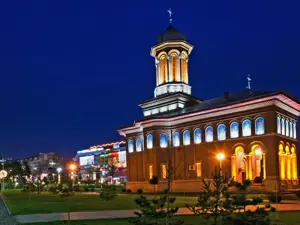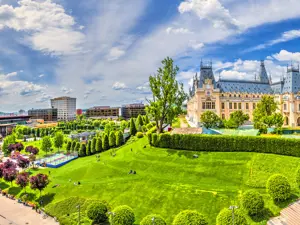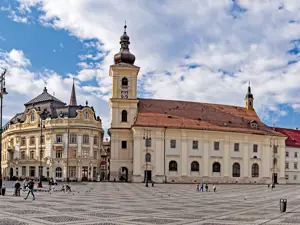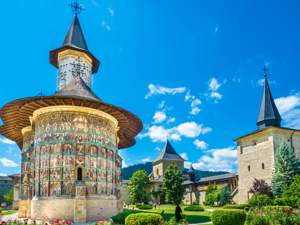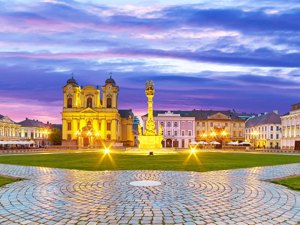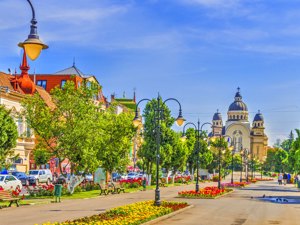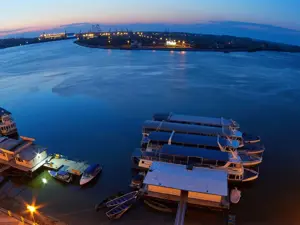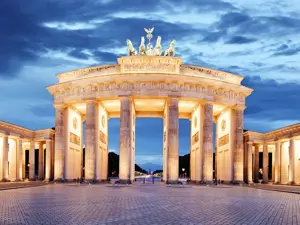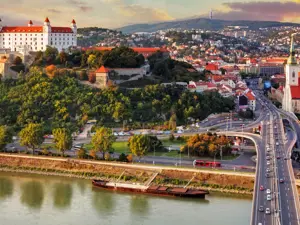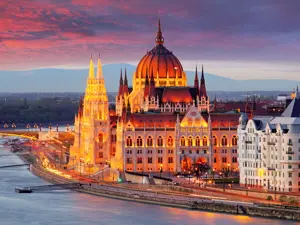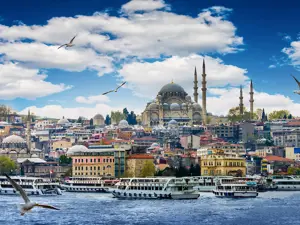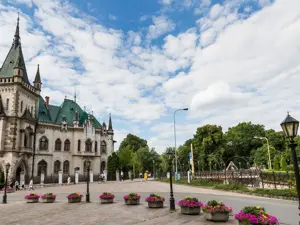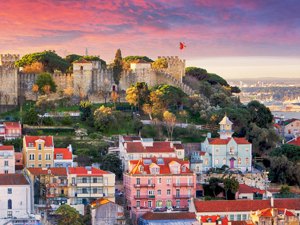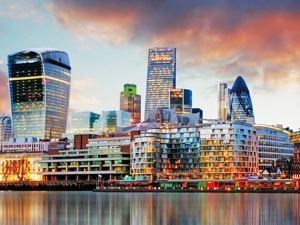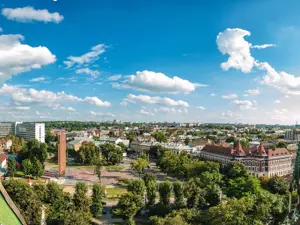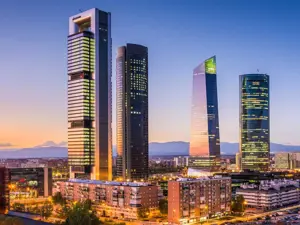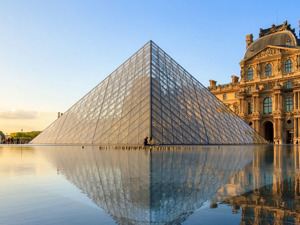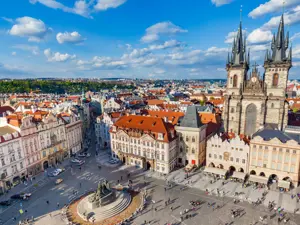Important economic, social and cultural center of Romania
A launch pad for getting to know Romania, Oradea still bears the glorious signs of its important past, especially of its period of greatest splendour when it was part of the Habsburg Empire. The Austrian style reigns supreme, due for the most part to the reconstruction of the city after a fire in the eighteenth century which almost destroyed everything: many spectacular palaces, such as the Bishop’s Palace, today Museum of the Crisana Region, bear the signature of Franz Anton Hillesbrand, a renowned Austrian architect.
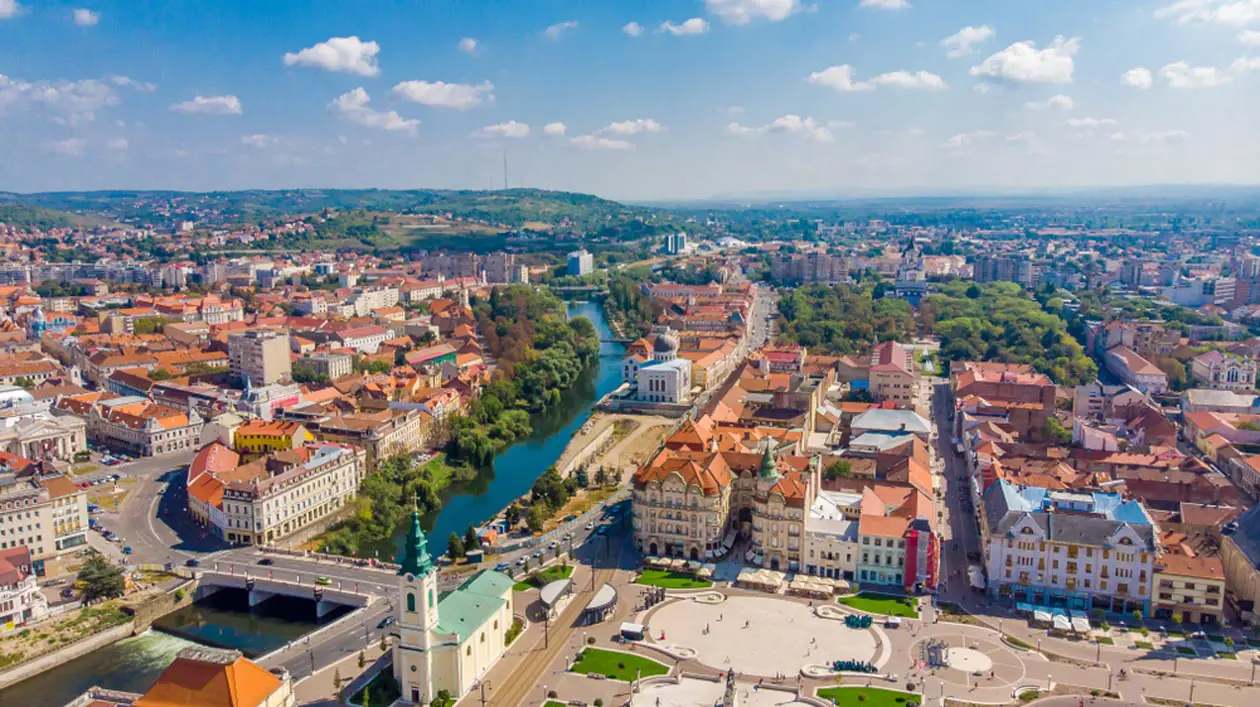
Oradea Photo: Copyright © Sisterscom.com / Shutterstock
However Oradea, together with the beautiful secessionist style – better known in the rest of Europe as Art Nouveau – offers many sumptuous buildings and Baroque churches. The mixture of architectural styles is a feast of colours: pale pink, blue and green, which contrast with white on coloured facades. In the distant past – in 1241 – the city was destroyed by a Mongol invasion, but was reborn again to become, in the fifteenth century, the residence of the King of Hungary Matthias Corvinus.
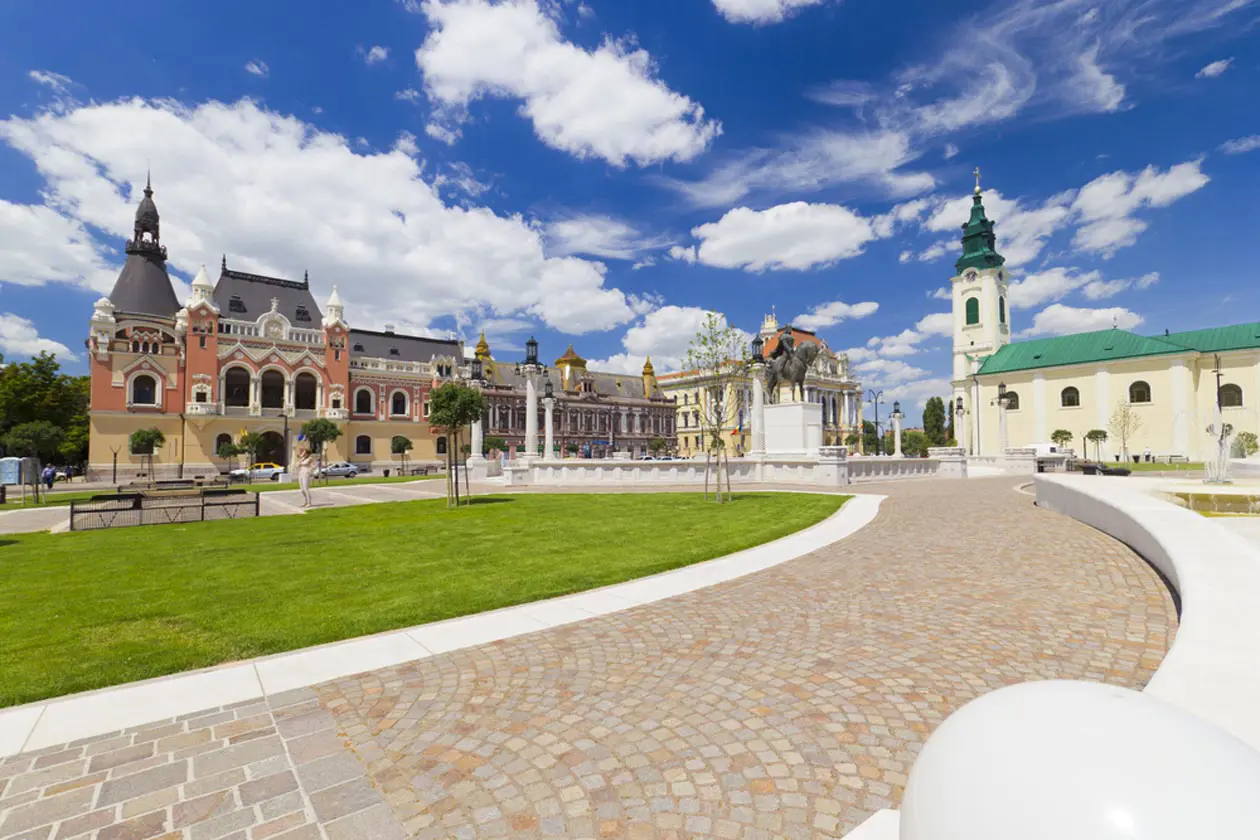
Oradea Photo: Copyright © Sisterscom.com / Shutterstock
Today it is a rediscovered tourist destination thanks also to the proximity – just 3 miles away – of its airport. Chief town of Bihor, one of the 41 counties of Romania, and located in the historical regions of Transylvania and Partium, Oradea is considered the gateway to central and western Europe. Today it is one of the most important economic, social and cultural centres of Romania, thanks to the presence of a prestigious university, the largest in Eastern Europe, which excels in the fields of literature, medicine and science.
Situated just a few kilometres from the Hungarian border, the city enjoys a picturesque position between hills and the River Crisel Repeda, which has delightful banks for picnicking and strolling in the summer months.
The squares of Oradea
The city is proud of its two large squares: Piata Unirii (Union Square), the main square overlooking the river and home to the spectacular Catholic Parish Church of St. Ladislaus; and the smaller Piata Regele Ferdinand (King Ferdinand Square), a beautiful pedestrian area with numerous coffee houses, near to which stands the elegant neoclassical building of the State Theatre. There are many open-air places that in spring and summer are filled with tourists and residents shopping or enjoying views of the city and river.
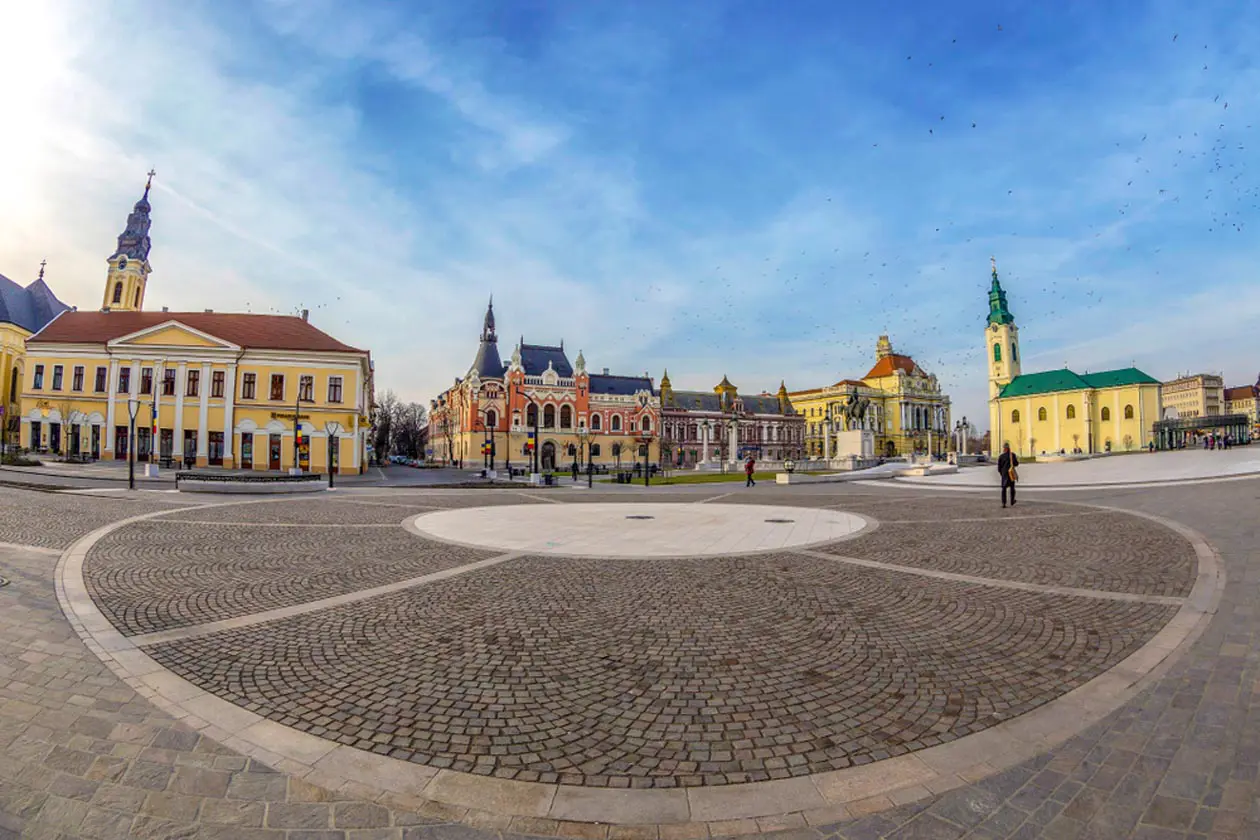
Oradea, Piata Unirii. Photo: Copyright © Sisterscom.com / Shutterstock
Churches of Oradea
There are also numerous architectural surprises, due, above all, the spectacular beauty of some of the city’s buildings, such as the Roman Catholic Cathedral, the largest Baroque religious building in Romania, which was designed following the layout of the Church of Jesus in Rome; the Moon Church, which has a mechanism that reproduces the lunar phases; as well as the ancient citadel, one of the best preserved in Europe, which features a fortress in the shape of the five-pointed star and is today the site of art and craft exhibitions throughout the year. There are some 100 churches of different denominations throughout the city, which offer evidence of the important multi-ethnic character of the city: there are 27 synagogues, testifying the widespread presence of Jewish people, such the one in Moorish style of a delicate pink colour, the Zion synagogue and the Grand Temple.
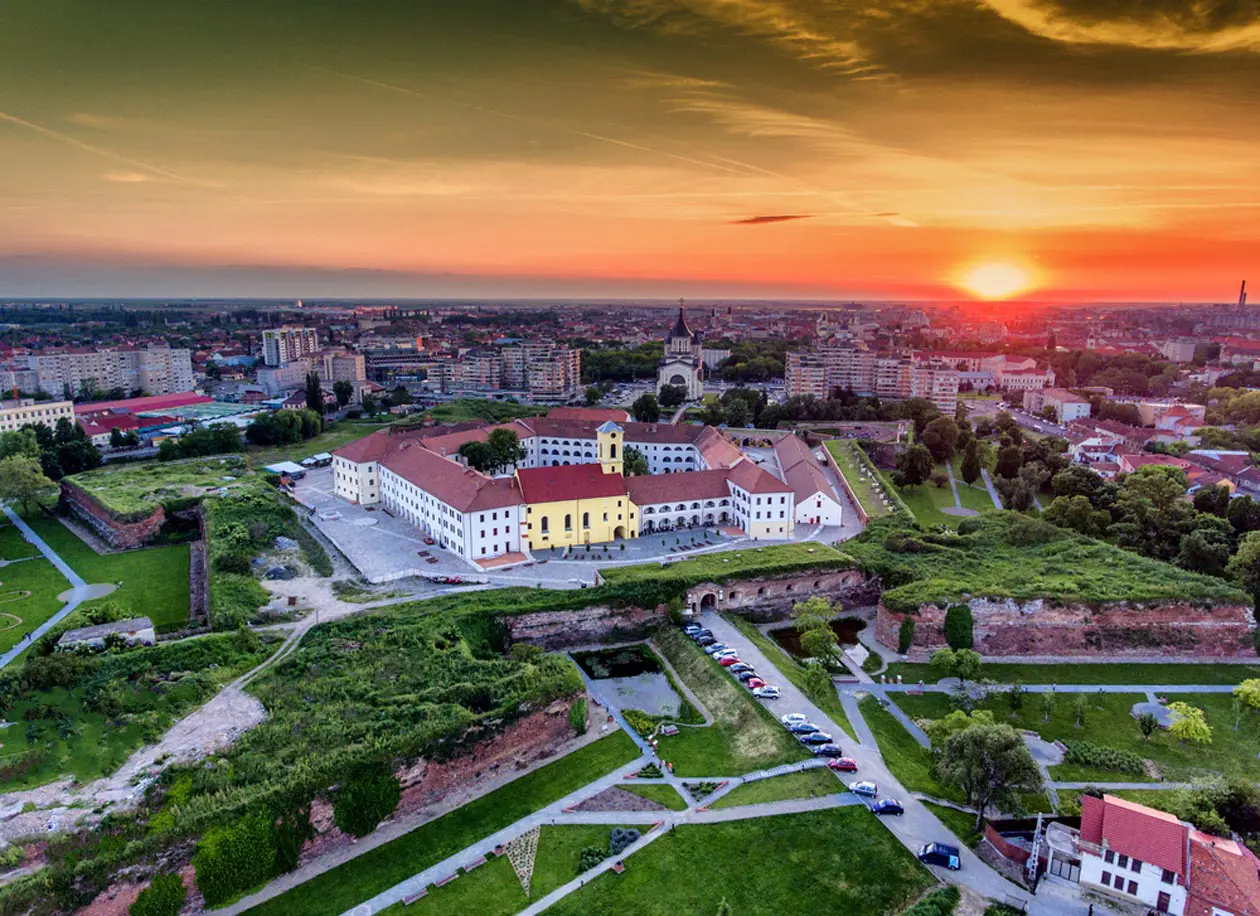
Oradea. The fortress in the shape of a five-pointed star. Photo: Copyright © Sisterscom.com / Shutterstock
The Public Gardens on the hill of Cinperca are well worth a visit, but a relaxing day at the Aquapark and Spa is also recommended. As is well known, the area is rich in beneficial thermal waters, which the aristocracy of the past would visit for treatments, such as the nearby Baile Felix Spa, which is particularly popular due to its valuable trace minerals.
The museums of Oradea
The museums describe the history of this beautiful city and region, such as the Crisanu Regional Museum with its rich collection of Romanian artists, the Ady Endre Museo, the museum-home of one of the greatest Hungarian poets who, with his words, promoted friendship between the Romanians and Hungarians, the Iosif Vulcan Museum, which was the home and editorial office of the ‘Family’ magazine and contains a collection of books of poetry, novels and a complete collection of issues of the magazine.

Gulasch Copyright © Sisterscom.com / Depositphotos
Gastronomic specialties
Among so much energy, even the local cuisine has adapted: it is rich in spicy flavours, such as pepper and paprika, which feature in the local, typically Hungarian dish of goulash, a meat stew flavoured with onions, carrots and potatoes.
Text by Anna Glik
Updated by Alisè Vitri
Avion Tourism Magazine
Copyright © Sisterscom.com all rights reserved.
Tourism Board
www.romania.travel
Partnership with Booking.com
Where to sleep in Oradea
Oradea Photo: Copyright © Sisterscom.com / Shutterstock
Oradea is a welcoming city and offers different possibilities for accommodation.
To find the ideal hotel and the best offers you can do a search for the stars but also for districts or landmarks.
WHERE TO GO IN ORADEA
Monuments in Oradea
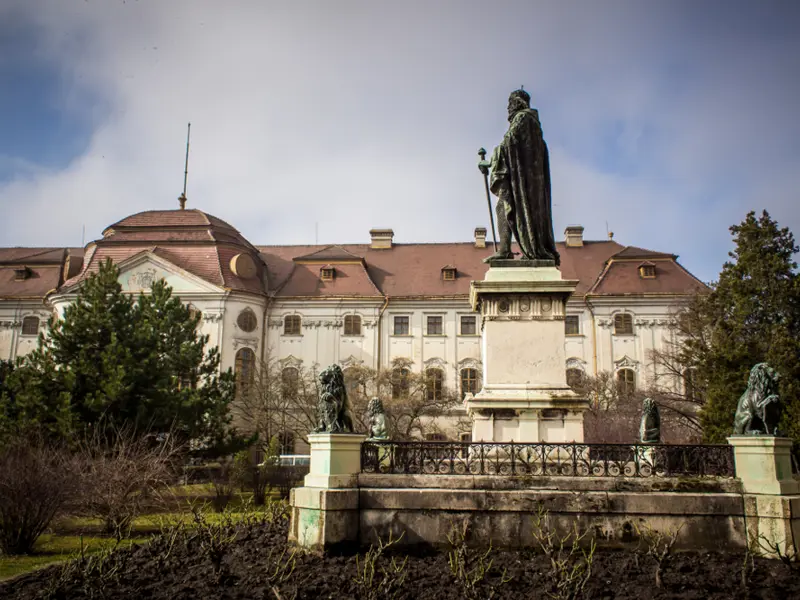
Photo: Copyright © Sisterscom.com / Shutterstock
BISHOP'S PALACE
In genuine Baroque style, the Bishop's Palace of Oradea is an imposing U-shaped building that extends over three floors. It has 100 fresco-adorned rooms, some 365 windows and a façade decorated with Ionic capitals. Today it houses the Crisana Regional Museum, where various works by Romanian artists are displayed.
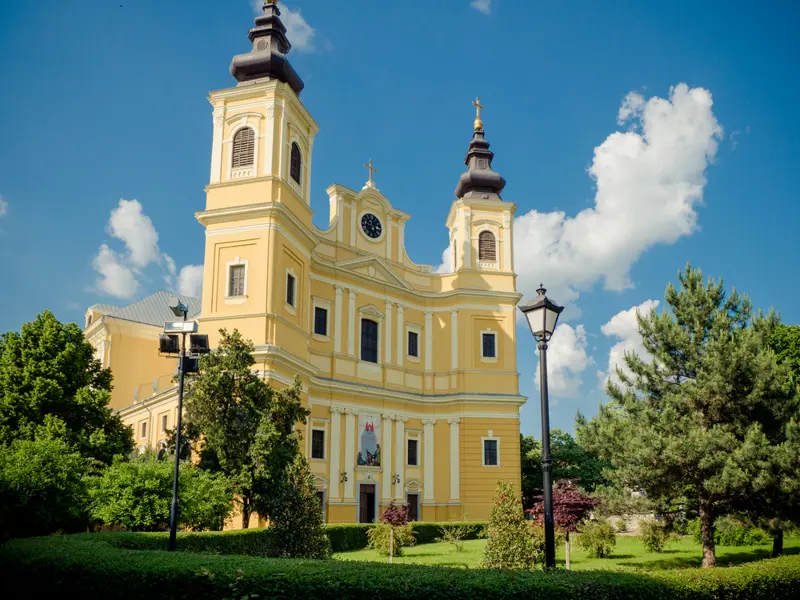
Photo: Copyright © Sisterscom.com / Shutterstock
CATHEDRAL OF ST. MARY
Built in the mid eighteenth century according to the design of the Italian architect Giovanni Battista Ricca, the Cathedral of St. Mary in Oradea displays sinuous lines which, on the outside, reflect the Baroque style. Inside, it confers a sensation of profound mysticism due to the interplay of colours and lights of its stained-glass windows. It houses an important organ, a gift from the Empress of Austria, Maria Theresa of the House of Habsburg.
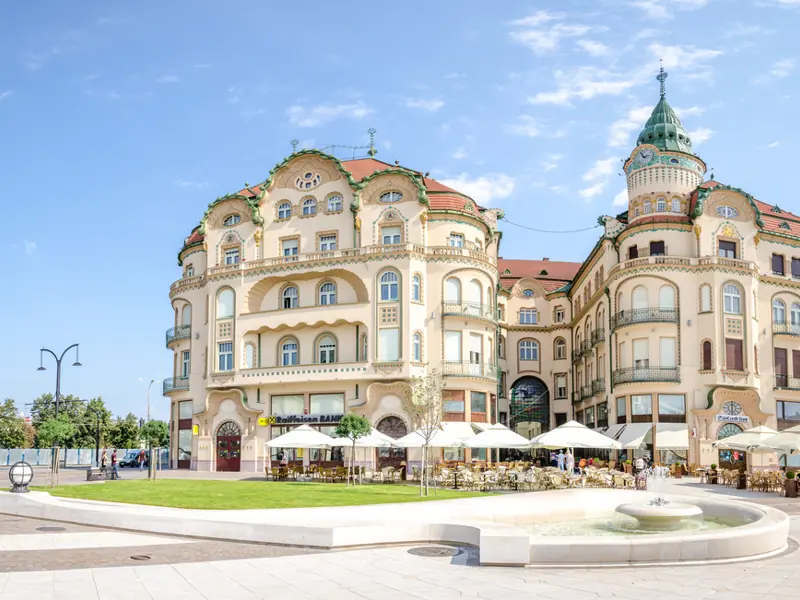
Photo: Copyright © Sisterscom.com / Shutterstock
BLACK EAGLE PALACE
The Black Eagle Palace of Oradea, the largest building complex in the city, comprises two asymmetrical blocks decorated with floral motifs and stucco bas-reliefs. It dates back to the early twentieth century and features a long gallery that connects the main streets of the city where many exclusive shops are located. Inside it offers a theatre, dance hall, hotel, casino and offices. Symbol of the building is a stained-glass window in Art Nouveau style depicting a black eagle, which gives its name to this vast complex.
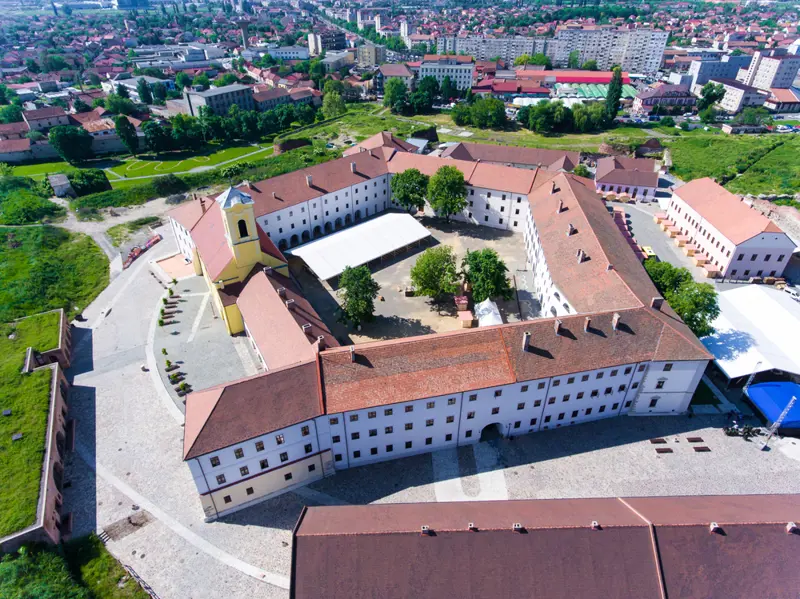
Photo: Copyright © Sisterscom.com / Shutterstock
CITADEL AND STAR-SHAPED FORTRESS
The Citadel and Star-Shaped Fortress of Oradea is almost impenetrable fortification was built by the King of Hungary, Ladislaus I, with an elegant star-shaped fortress at its centre. In spite of numerous sieges in the past, the fortress was only conquered three times because, as legend has it, not only was it surrounded by a wide moat, but inside the maze-like arrangement of the rooms ensured that it was easy to get lost. It has been a destination of pilgrimage for many years, particularly because King Ladislaus I, known as the Thaumaturge, is buried here.
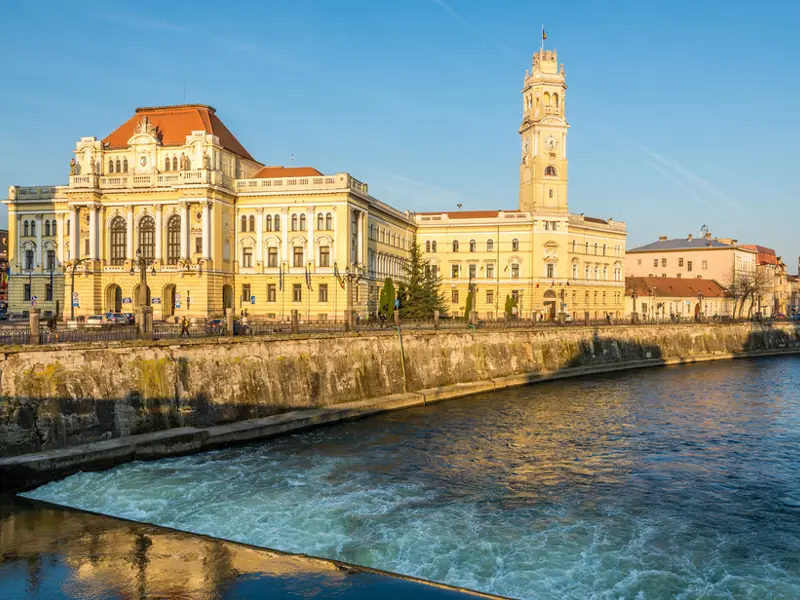
Photo: Copyright © Sisterscom.com / Shutterstock
CITY HALL OF ORADEA
The City Hall of Oradea is a large building dating back to the early twentieth century, it features a tower of 170 feet with four bells that on the hour play part of a revolutionary tune written by the Hungarian poet, Iancu, known as the March of Iancu.
Excursions in Oradea
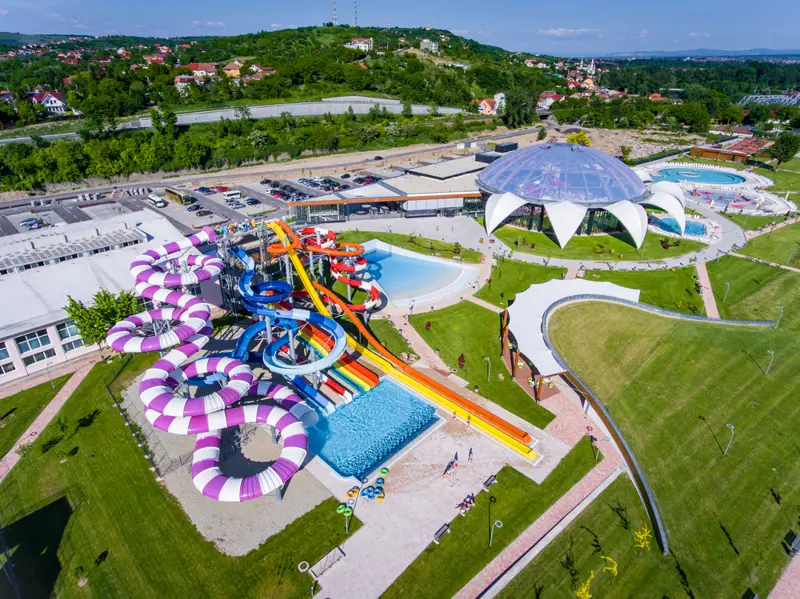
Photo: Copyright © Sisterscom.com / Shutterstock
AQUA PARK NYMPHAEA
This delightful water park is suitable for both adults and children and offers thermal pools, Turkish baths and massages, as well as restaurants and cafeterias.
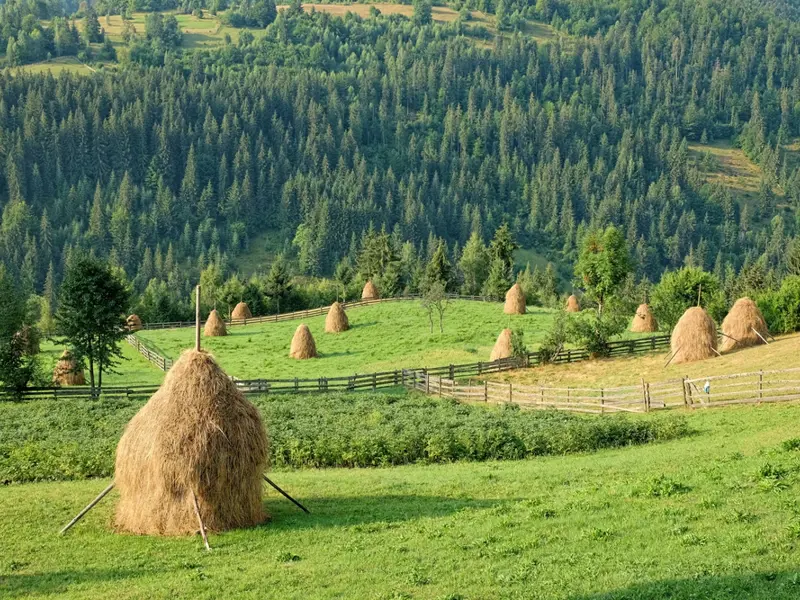
Photo: Copyright © Sisterscom.com / Shutterstock
APUSENI NATURAL PARK
This park is located just a few miles from the city of Oradea and has been a geological reserve since 1938. The trees present on the site include examples of Norway spruce and mountain beech. The karst formations of the Apuseni mountains, which belong to the Carpathian range, render the landscape a unique place with some 1,500 caves and long underground galleries. It is inhabited by varied fauna such as bears, wild boar, red deer and roe deer. Its mountains are exciting destinations for lovers of trekking, skiing, mountain biking, and for the spectacular views and discovery of ancient local traditions: in the villages of Albac, Garda and Arieseni craftsmen carve fine furniture, musical instruments and everyday items. Summer offers numerous mountain festivals.
Partnership with GetYourGuide
All tour and excursions
News & Useful info
Luxury
You might be interested in
Destinations found in the vicinity
Other destinations
Airports nearby Oradea

